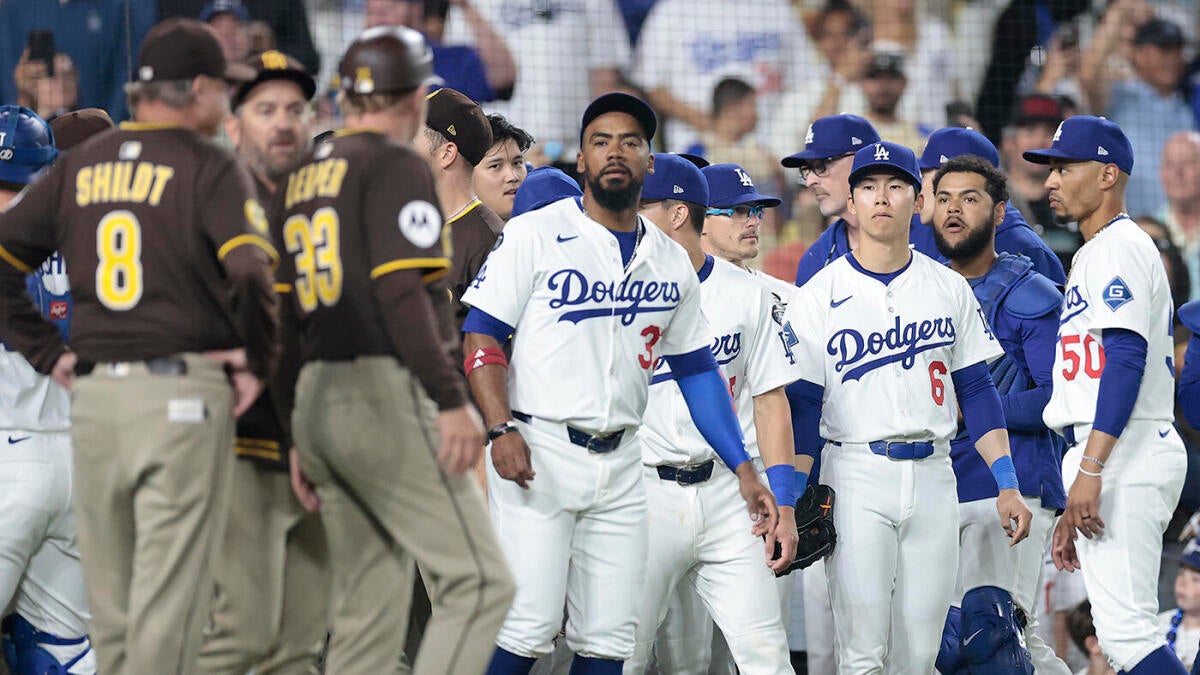A Rising Tide of Tension: Analyzing the Dodgers-Padres Escalating Rivalry
The Los Angeles Dodgers and San Diego Padres have long been rivals, but the tension between these two teams has recently escalated to unprecedented levels. Beyond the competitive spirit of the game, the rivalry has devolved into a series of contentious incidents, marked by hit-by-pitches, ejections, and near-brawls. This escalation is not merely about competitive baseball; it reflects a deeper, more deliberate conflict that could have significant ramifications for both teams.
The Anatomy of a Feud: Hit-by-Pitch Count and Key Incidents
At the heart of the current conflict is a troubling number of hit-by-pitches (HBPs). Over a recent seven-game series spanning eleven days, a staggering ten batters were hit. Key players, including Fernando Tatis Jr. and Shohei Ohtani, have become central figures in this feud. Both were hit twice in a four-game series, with Tatis being hit three times this season by Dodgers pitchers. Other players, such as Dodgers outfielder Andy Pages, Jose Iglesias, and Bryce Johnson, have also been affected.
The incidents are not isolated or accidental. The situation reached a boiling point on Tuesday night when Ohtani was hit by a pitch from Randy Vásquez. This led to the ejection of Dodgers manager Dave Roberts after a heated argument. The tension continued in subsequent games, with both Ohtani and Tatis being hit again, further inflaming the situation. Notably, Ohtani was hit in the half-inning immediately following a hit on Tatis, suggesting a clear retaliatory pattern.
Managerial Involvement and the Escalation of Conflict
The involvement of both managers, Dave Roberts and Mike Shildt, has significantly contributed to the escalation. Roberts’ ejection after Ohtani was hit showcased his strong defense of his players and his frustration with perceived intentional targeting. Shildt’s reaction to Tatis being hit, charging out of the dugout, signalled a reciprocal stance, indicating that the Padres would not tolerate their star players being intentionally harmed. The physical altercation between Roberts and Shildt, witnessed by all, marked a significant escalation, moving the conflict beyond on-field incidents and into a direct confrontation between leadership.
The managers’ actions are not merely reactive; they actively contribute to the escalating tension. Their strong responses, while understandable from a player-protection perspective, also signal to their teams that retaliation is acceptable, potentially perpetuating the cycle of HBPs.
The Underlying Dynamics: Rivalry, Playoff Implications, and Perceived Intent
The Dodgers-Padres rivalry is not new, but it has intensified in recent years as the Padres have emerged as legitimate contenders in the NL West. The Dodgers currently hold a comfortable lead in the division, but the Padres’ proximity and playoff aspirations add fuel to the fire. Every game carries significant weight, and the stakes are high.
However, the current situation transcends typical divisional competition. The sheer number of HBPs suggests a deliberate element, a perceived intent to send a message or intimidate opponents. While pinpointing intent is difficult, the pattern is undeniable. The repeated targeting of star players like Ohtani and Tatis raises serious questions about the sportsmanship and strategic motivations behind the pitches.
The fact that Ohtani, a global superstar and relatively new to the Dodgers, is being targeted is particularly noteworthy. It suggests the Padres are attempting to disrupt the Dodgers’ dynamic and potentially unsettle their key player. Ohtani himself even appeared to act as a peacemaker, attempting to de-escalate a potential bench-clearing brawl after being hit, highlighting the absurdity of the situation.
The Impact and Potential Consequences
The immediate impact of the feud is a heightened emotional state for both teams, potentially affecting their performance. Players are likely playing with a degree of apprehension, aware of the risk of being hit. The constant tension could lead to further incidents, including more ejections and even suspensions.
Beyond the immediate games, the feud could have long-term consequences. It risks damaging the reputation of both organizations and fostering a hostile environment. MLB may intervene if the situation continues to escalate, potentially imposing fines or suspensions to restore order.
Furthermore, the focus on the conflict overshadows the actual baseball being played. While the rivalry generates headlines, it detracts from the skill and athleticism on display. The narrative becomes centered on retaliation and potential injury, rather than strategic gameplay and individual performances.
A Delicate Balance: Navigating the Future of the Rivalry
The Dodgers-Padres rivalry has reached a critical juncture. While a degree of intensity is inherent in competitive sports, the current situation is spiraling towards dangerous territory. Both teams need to prioritize player safety and sportsmanship. Managers Roberts and Shildt must take a proactive role in de-escalating the conflict, emphasizing the importance of playing the game with respect and integrity.
MLB also has a responsibility to address the situation, potentially issuing warnings or imposing penalties to deter further incidents. Ultimately, the future of the rivalry hinges on the ability of both teams to find a delicate balance between competitive fire and responsible conduct. The current trajectory risks transforming a compelling divisional battle into a dangerous and unproductive conflict, damaging the game and potentially jeopardizing the well-being of its players. The tension must be managed carefully to ensure that the rivalry remains a source of excitement and competition, rather than a breeding ground for hostility and harm.











